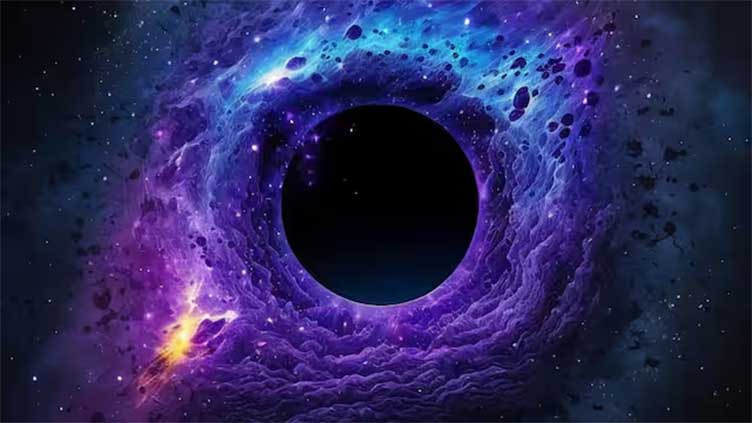Scientists find force behind black hole mergers

Technology
It's mysterious dark matter!
(Web Desk) - Scientists have found a new connection between dark matter particles and supermassive black holes (SMBHs) which has the potential to resolve the longstanding “final parsec problem” in the field of astronomy.
The research published in the journal Physical Review Letters suggests that the dark matter particles' behaviours, which were earlier overlooked, led to the merger of SMBH pairs into one larger black hole.
A pervasive “hum” of gravitational waves was detected by astrophysicists in 2023 across the universe. It was then hypothesised that background signal was released from millions of merging SMBH pairs, each of which was billions of times more massive in comparison to our Sun.
The theoretical simulations indicated that these colossal objects stall the approach when they are nearly a parsec apart (about three light years), which prevents a merger.
Study co-author Gonzalo Alonso-Álvarez, who is a postdoctoral fellow in the Department of Physics at the University of Toronto, said, “We show that including the previously overlooked effect of dark matter can help supermassive black holes overcome this final parsec of separation and coalesce."
“Our calculations explain how that can occur, in contrast to what was previously thought,” Alonso-Álvarez added.
Professor James Cline from McGill University headed the research.
A new model was developed by the team in which it was proved that when dark matter particles interact with each other, they do not get dispersed.
In this interaction, it was maintained that the density of the dark matter is halo which allowed the SMBHs to go spiralling inward and then merge.
According to the scientists, supermassive black holes are present at the centre of most of the galaxies. Therefore, when the collision between two galaxies occurs, the SMBHs fall into orbit near each other.
When they revolve, they are slowed down by the gravitational pull of nearby stars which causes them to spiral inward.
“The possibility that dark matter particles interact with each other is an assumption that we made, an extra ingredient that not all dark matter models contain. Our argument is that only models with that ingredient can solve the final parsec problem," Alonso-Álvarez said.


